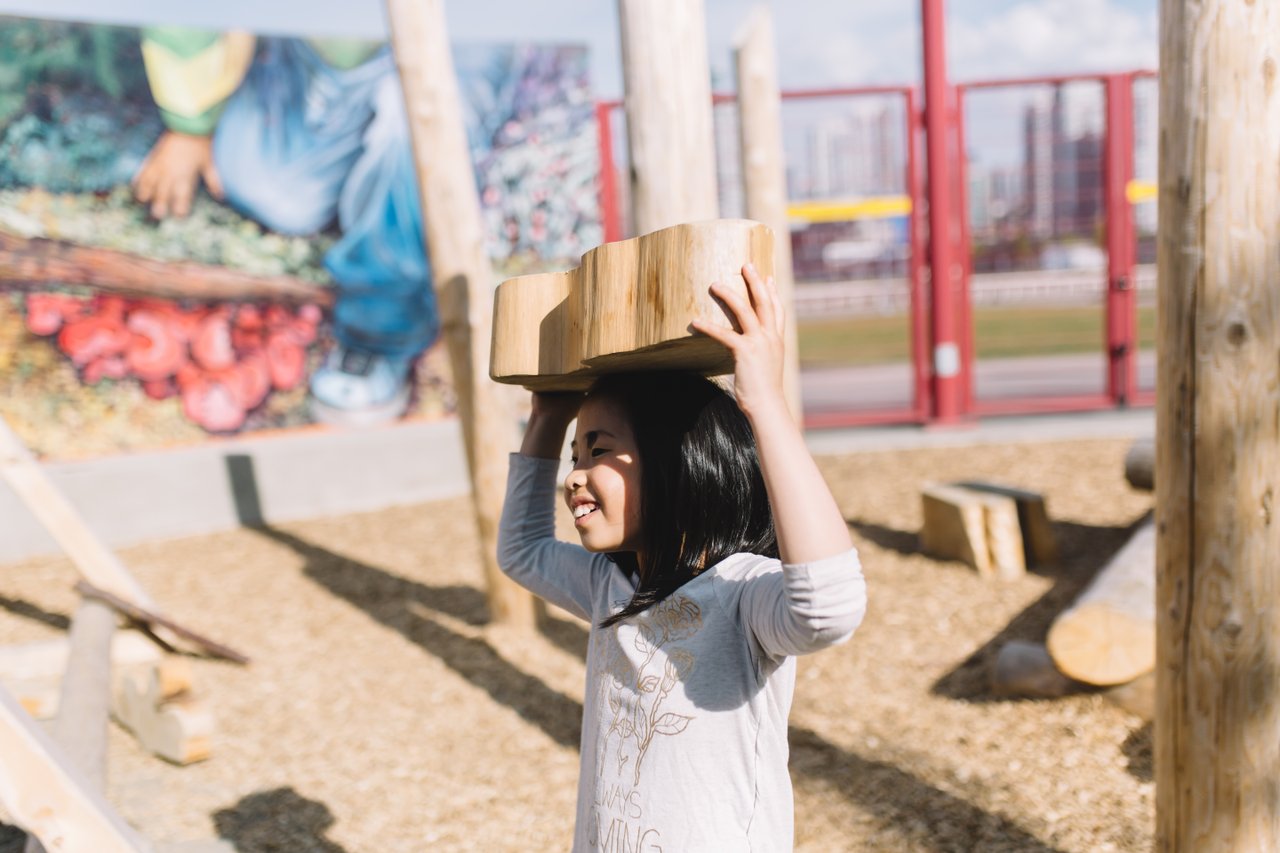In my neighbourhood, kids had a society of their own, separate from parents, and risk-taking was inherent. All kinds of accidents happened too. I crashed my bike, fell out of trees and was pinched, pushed, and bitten by other kids. The only reason my mom knew about any of it is because sometimes I wandered home, looking to collect some sympathy for my injuries.
Many parents of my generation can identify with a childhood like mine, despite the fact that our kids are having an entirely different experience. In an American study, 70 percent of mothers in the US reported that they experienced daily unstructured outdoor play as children, and only 31 percent reported that their own children have that experience today.
What we call “free play” today, is play that is unstructured, with low supervision. We know now that access to this type of play is not just nice to have, it may be critical to healthy child development because it promotes the acquisition of reasonable risk-taking strategies through experiential learning. It offers children the opportunity to learn what they are capable of and to play out their anxieties, which can lead to a better ability to trust themselves.
Today's kids are allowed fewer freedoms than their parents’ generation for a lot of reasons. Access to, and preference for, screen time is one culprit, but this could be a chicken-or-the-egg scenario. Keeping kids indoors, or close at hand, is largely driven by a societal fear of injury or abduction, even though there has been no statistical increase in these dangers from generation to generation. When you keep a child inside, you have to offer them some sort of outlet and screen time may have become that outlet.
Coupled with a culture that promotes “intensive parenting”—a notion that children should be engaged in educational activities, organized sports and games, lessons and structured, parent-supported play—a highly programmed schedule facilitates a lot of time in the car and promotes an increase in car traffic and screen time. Often, parents feel that allowing kids some time to play with a tablet or watch television is a way for kids to be free and entertained for a moment, in a way that is safe and observable.
Where can the urban child run free?

Simply throwing your kids into a "risky play" situation is easier said than done, however. For one thing, society is a little behind on the parameters of this concept. I have found, on more than one occasion, that someone at the playground will rush to the scene to “rescue” my toddler from going the wrong way down a slide or from having a toy snatched by another toddler.
Not to mention that, even though “there is no specific age legislation in BC or in Canada that stipulates when a child can be left unsupervised”, letting your children take active transport, such as walking, biking, or bussing to school unsupervised, may invite a complaint to social services.
A trip to Science World is a great place for parents to start learning about play and to experiment with some risky play opportunities.
Before I became a mother, I thought I understood the concept behind risky play insofar as it could be applied to the Wonder Gallery for early learners at Science World. I understood that the CLIMB structure was designed to offer children the opportunity to explore their limits independently, take reasonable risks, but potentially get a bump or a scratch in the learning process.
When it came to actually allowing my toddler to navigate it, on his own, I was nervous! I found myself worrying about those minor injuries, what the other parents would think of me letting him roam free in there, and how I could fit inside to extract him in the event of some grievous emergency.
In the end he survived, of course. What’s more, I found it reassuring that the CLIMB structure is a designated space to have a risky play experience. It is a great first step to building confidence in free play, both for me and my child.
Given the research on play and healthy child development, playground designers, educators, and informal education institutions are working to include healthy risk-taking opportunities and natural elements into their designs and plans.
At Science World, we take play and nature very seriously. In addition to the CLIMB structure in Wonder, we have recently opened the Nature Exploration Space in our Science Park outdoor gallery. In this space, children of all ages are encouraged to do what comes naturally, outside, with materials that they would find in nature.
Science World is a great place to offer your child some risky play opportunities, but the fun doesn’t have to end there.
Consider visiting a local nature park like the ones we visited with our nature expert, Dale!